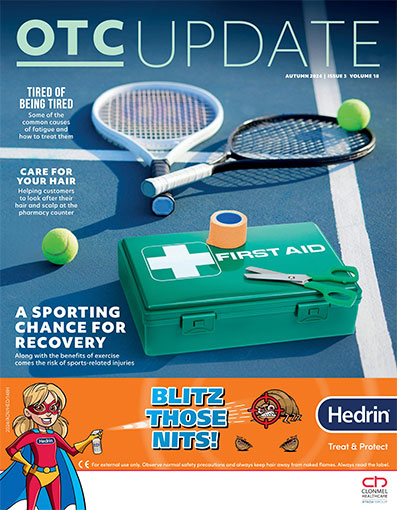Des Corrigan looks at the benefits of Moroccan Argan oil and finds that for once, there may be sufficient evidence to believe the hype
Over the past while, ads for hair and other cosmetic products whose claim to fame lies in them containing Moroccan Argan oil have impinged on my consciousness. This led me to ask, what is Argan oil and is it all that special?
What I learned is that the oil comes from the seeds of a tree cultivated in Morocco (though it also grows in Algeria and Tunisia) where it is used as an edible oil at breakfast or on couscous. Argan oil production is a major enterprise for Moroccan women’s co-operatives and the income they derive from it has had a major empowering effect on local women, which in itself is an excellent reason for promoting the wider use of the oil. The success of their efforts is shown by the fact that the number of personal care products containing Argan oil increased from four to over 100 in just four years, with total oil production set to reach 19,000 tons by 2022.
This is a huge amount of oil when one considers that the seed kernels are removed by hand and then gently roasted, which gives it a ‘hazelnut’ taste when the oil is for food use. Oil for cosmetic use is not roasted. The oil is recovered by pressing, after which sediment is removed by filtration. Some ‘cosmetic’ oils are produced by solvent extraction of crushed seeds, leading to classification of the hand-produced products as ‘virgin’ oils. This, of course, is similar to olive oil and the two oils are somewhat similar in their fatty acid composition. Argan oil consists of triglycerides, in which the predominant fatty acid is oleic acid (43 per cent), compared to about 70 per cent in olive oil. Where the oils differ is in the concentration of linoleic acid, with Argan having more than double (37 per cent) that found in olive oil. Other constituents comprise the saturated fatty acids, palmitic and stearic acids, polyphenols and ?-tocopherol (vit E), which it is claimed is the most potent antioxidant of the tocopherol group, compared to the ?-form found in sunflower oil. Because of its similarity to olive oil, much attention has centred on the chemopreventive effect of Argan oil.
Preclinical studies in animals have demonstrated inhibition of platelet aggregation, anti-diabetic effects, including reduced hyperglycaemia and insulin resistance, and reductions of up to 37 per cent in total cholesterol and 67 per cent in LDL-cholesterol. The oil has also shown cytotoxic and anti-proliferative effects against human prostate cancer cell lines. Much of the clinical work has come, predictably perhaps, from Moroccan research groups. Some have concentrated on what is called the ‘dermocosmetology’ aspects, while others have looked at aspects that are more clinical.
Because Argan oil is used in many body care products as a moisturiser, a 2013 paper commented on a possible effect on the skin of post-menopausal women. In such women, there is an increase in trans-epidermal water loss (TEWL) and a decrease in the water content of the epidermis (WCE). The researchers studied 30 healthy post-menopausal women who applied 10 drops of oil to one arm every night for two months. Both TEWL and WCE were assessed before treatment started, after a month and at the end of the study. There was a statistically significant decrease in water loss and a significant increase in WCE after two months, indicating the potential of this oil as a moisturiser.
A further study published in 2015 in the journal Clinical Interventions in Ageing involved two groups of 30 post-menopausal women. The treatment group received dietary Argan oil, while the control group consumed olive oil. Both groups applied cosmetic-grade Argan oil to their left arm daily for two months. Assessments of skin elasticity parameters were performed on both arms for the two groups before the study began, after a month and after two months.
The consumption of Argan oil led to a significant increase in skin elasticity compared to olive oil. The topical application of the oil also led to a significant increase in skin elasticity. The synergistic effect of both dietary and cosmetic oils that was also measured was ascribed to the tocopherol content of the oils. A previous 2013 study by the same group had shown an increased level of vit E in the blood of 151 women treated with Argan, compared to those treated with olive oil. While these effects on the skin are encouraging, a note of caution arises from a report from Italy in the journal Contact Dermatitis from 2014 that describes a case report of contact dermatitis in a 50-year-old woman who had used a moisturiser containing Argan oil. Subsequent patch testing proved positive.
A randomised, controlled trial published in Current Rheumatology Review in 2017 looked at the effectiveness of Argan oil consumption on the symptoms of osteoarthritis of the knee. One group of 51 patients consumed 30ml of oil every day for two months, while the control group received no treatment. Both groups were predominantly (93 per cent) female. Clinical end-points include a Visual Analogue Scale (VAS) for pain intensity, walking parameters, the Western Ontario and McMaster Universities Osteoarthritis Index (WOMAC), and the Lequesne Index. This latter is an index of the severity of osteoarthritis of the knee based on the presence of pain, maximum walking distance and activities of daily life, such as the ease of climbing up and down stairs. After the two months, there was a significant decrease in pain VAS, WOMAC pain index, Lequesne Index and walking distance was significantly improved compared to the control group.
In 2018, a systematic review and meta-analysis of studies of the effect of Argan oil on plasma lipids was published in Phytotherapy Research. Data from five eligible trials involving 292 participants showed significant reductions in total cholesterol of 16.85mg/dl. The reduction in LDL-cholesterol was also significant, at -11.67mg/dl, as was the decrease in triglycerides at –13.69mg/dl. HDL-cholesterol showed a significant increase of 4,14mg/dl compared with control treatments. Previously, a study of 18 men and 19 women with end-stage renal disease displayed an improvement in markers relating to lipid profile and oxidative stress.
It appears therefore that the evidence suggests that Argan oil is potentially special and that for once, the hype about it is not just advertising exuberance.







